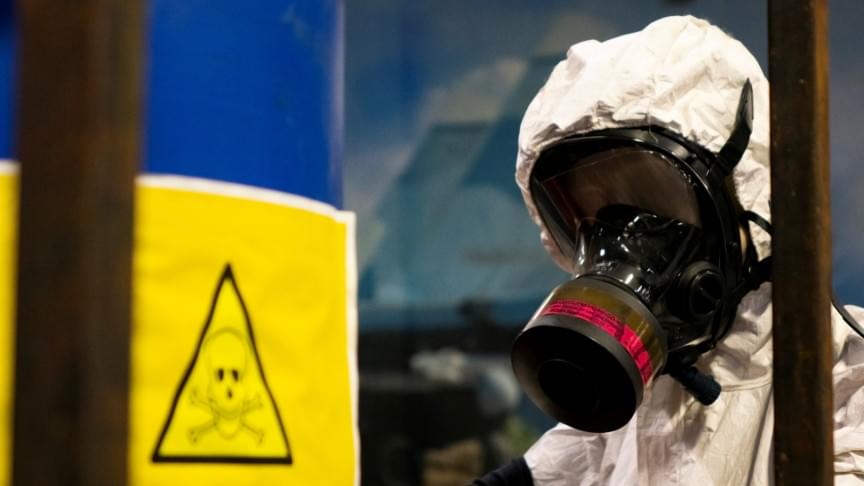
Category: biotech/medical – Page 1,420


Dr. Emilio Emini, Ph.D. — CEO — Bill & Melinda Gates Medical Research Institute
Biomedical Interventions For Substantial Global Health Concerns — Dr. Emilio Emini, Ph.D., CEO, Bill & Melinda Gates Medical Research Institute
Dr. Emilio A. Emini, Ph.D. is the CEO of the Bill & Melinda Gates Medical Research Institute (https://www.gatesmri.org/), a non-profit organization dedicated to the development and effective use of novel biomedical interventions addressing substantial global health concerns, for which investment incentives are limited, and he leads the Institute’s research and development of novel products and interventions for diseases disproportionately impacting the world’s most vulnerable populations.
Before joining the Gates MRI, Dr. Emini served as director of the HIV and Tuberculosis program at the Bill & Melinda Gates Foundation, where he led the foundation’s efforts focused on accelerating the reduction in the incidence of HIV and TB in high-burden geographies, with the goal of achieving sustained epidemic control.
Over the course of his previous 30-year career in the bio-pharmaceutical industry, Dr. Emini led teams involved in the research and development of novel anti-infectives and vaccines. From 1983 to 2004, he led research at the Merck Research Laboratories involved in the development of one of the first highly active anti-retroviral therapies for HIV and, as senior vice president of vaccine research, the successful development of a number of vaccines including vaccines for human papillomavirus and rotavirus.
Dr. Emini later served as senior vice president of vaccine development at the International AIDS Vaccine Initiative. From 2005 to 2015, he was senior vice president of vaccine R&D at Pfizer Inc., leading the development of Prevnar 13® for prevention of pneumococcal disease.

Scientists discover how molecule becomes anticancer weapon
Years of toil in the laboratory have revealed how a marine bacterium makes a potent anti-cancer molecule.
The anti-cancer molecule salinosporamide A, also called Marizomb, is in Phase III clinical trials to treat glioblastoma, a brain cancer. Scientists now for the first time understand the enzyme-driven process that activates the molecule.
Researchers at UC San Diego’s Scripps Institution of Oceanography found that an enzyme called SalC assembles what the team calls the salinosporamide anti-cancer “warhead.” Scripps graduate student Katherine Bauman is the lead author of a paper that explains the assembly process in the March 21 issue of Nature Chemical Biology.

Looking at a Human Face Triggers Activity in Our Brains Unlike Any Other Object
It may not feel like it, but our eyes are constantly making rapid, tiny movements called saccades, taking in new information as we focus our gaze on various things in the world. As we do so, our brains receive the input – and depending on what the object of our gaze is, it turns out the brain activity triggered can be quite unique.
“While we typically do not perceive our own eye movements, the abrupt change in visual input with each saccade has substantial consequences at the neuronal level,” researchers explain in a new study led by first author and cognitive neuroscientist Tobias Staudigl from Ludwig Maximilian University of Munich in Germany.
In an experiment, Staudigl and fellow researchers worked with 13 epilepsy patients, who had electrodes implanted in their brains to monitor their condition. This kind of intervention can be helpful for brain scientists, so they often turn to such patients with electrodes already implanted, in case they’d be willing to volunteer their time.

An artificial intelligence invents 40,000 chemical weapons in just 6 hours
A.I. is only beginning to show what it can do for modern medicine.
In today’s society, artificial intelligence (A.I.) is mostly used for good. But what if it was not?
Naive thinking “The thought had never previously struck us. We were vaguely aware of security concerns around work with pathogens or toxic chemicals, but that did not relate to us; we primarily operate in a virtual setting. Our work is rooted in building machine learning models for therapeutic and toxic targets to better assist in the design of new molecules for drug discovery,” wrote the researchers in their paper. “We have spent decades using computers and A.I. to improve human health—not to degrade it. We were naive in thinking about the potential misuse of our trade, as our aim had always been to avoid molecular features that could interfere with the many different classes of proteins essential to human life.”
Full Story:
Researchers from Collaborations Pharmaceuticals tweaked artificial intelligence to look for chemical weapons, and impressively enough the machine learning algorithm found 40,000 options in just six hours.

MIT researchers use simulation to train a robot to run at high speeds
Four-legged robots are nothing novel — Boston Dynamics’ Spot has been making the rounds for some time, as have countless alternative open source designs. But with theirs, researchers at MIT claim to have broken the record for the fastest robot run recorded. Working out of MIT’s Computer Science and Artificial Intelligence Laboratory (CSAIL), the team says that they developed a system that allows the MIT-designed Mini Cheetah to learn to run by trial and error in simulation.
While the speedy Mini Cheetah has limited direct applications in the enterprise, the researchers believe that their technique could be used to improve the capabilities of other robotics systems — including those used in factories to assemble products before they’re shipped to customers. It’s timely work as the pandemic accelerates the adoption of autonomous robots in industry. According to an Automation World survey, 44.9% of the assembly and manufacturing facilities that currently use robots consider the robots to be an integral part of their operations.
Today’s cutting-edge robots are “taught” to perform tasks through reinforcement learning, a type of machine learning technique that enables robots to learn by trial and error using feedback from their own actions and experiences. When a robot performs a “right” action — i.e., an action that’ll lead it toward a desired goal, like stowing an object on a shelf — it receives a “reward.” When it makes a mistake, the robot either doesn’t receive a reward or is “punished” by losing a previous reward. Over time, the robot discovers ways to maximize its reward and perform actions that achieve the sought-after goal.

Bristol Myers lands $1.1B biobucks oncology pact with Volastra, a biotech with phones ‘ringing off the hook’
Ever since last year’s annual American Association of Cancer Research (AACR) meeting, Volastra’s phone has been “ringing off the hook,” according to CEO Charles Hugh-Jones, M.D. | Two years since its inception, Volastra Therapeutics is partnering with Bristol Myers Squibb for up to three oncology targets focused on chromosomal instability, a deal that could exceed $1.1 billion should the assets hit milestones.

DNA used to make the world’s tiniest “radio”
Scientists have created the world’s smallest antenna, measuring only five nanometers in length, out of synthetic DNA.
But it doesn’t transmit radio waves — instead, this little antenna is designed to signal real-time changes in proteins. And because it’s fluorescent, it records and transmits data via light signals.

Mutation protecting against Alzheimer’s edited into human cells
Treating brain diseases is also always difficult because of something called the “blood-brain barrier.” This wall of cells is designed to prevent toxins and pathogens from getting from the blood into the brain — but it also makes it hard to get treatments into the brain.
People with the Icelandic mutation are five times more likely to reach their 85 birthday without an Alzheimer’s diagnosis.
The Icelandic variant: Scientists have identified a couple of differences between the brains of people with Alzheimer’s and those of healthy people.